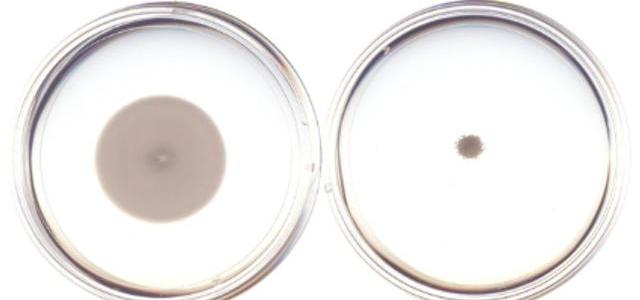How Bacteria Tie Knots: Unravelling a Hidden Weakness in Deadly Pathogens
Posted on November 5, 2025 by Cristina Landeta
Cristina Landeta of the Indiana University Bloomington, US, take us behind the scenes of their latest publication 'Disulphide bond-forming enzymes in clostridial species' published in Microbiology.

I’m Cristina Landeta, an assistant Professor in the Department of Biology at Indiana University Bloomington.
My lab studies the processes that help microorganisms stabilize their proteins by making molecular “knots” that hold together the protein. These knots are called disulfide bonds, tiny links made of sulfur atoms that help proteins to fold into the right shapes. Just like origami needs the right creases, proteins need these bonds to stay stable and functional. In bacteria, disulfide bonds are often essential for making molecules that help pathogens infect and harm humans.
I’ve always been fascinated by the diversity of this process across all bacteria, and I wondered how these “knots” are formed in organisms that grow in the absence of oxygen in deadly bacteria like Clostridium botulinum (which causes botulism), Clostridium tetani (behind tetanus), or Clostridioides difficile (a major cause of hospital infections). Deep inside these microbes, these molecular “knots” hold their most dangerous weapons together, and we wanted to know how.
Despite how crucial these bonds are, the enzymes that form these bonds in clostridial species had remained largely unknown - until now. We have uncovered key enzymes that help these organisms fold and stabilize their toxic proteins.
The discovery itself was an unexpected journey. We were initially testing just two small oxidants when I reached out to an expert in Clostridiodes. She mentioned she was collaborating on a new study that was about to be published in Cell and suggested we try a different small molecule they were studying. I remember the thrill of that moment - the possibility that this molecule could be the missing piece that “recycles” the enzymes we were studying.
In the end, it didn’t have the dramatic effect we had hypothesized - but that’s the beauty of science. Even when an idea doesn’t lead to a breakthrough, the process of discovery - of exploring the unknown and learning how cells work - makes it all worthwhile. That spark of curiosity and excitement, the thrill of being the first to glimpse something new, is what keeps us scientists going.
Why This Matters
Understanding how these bacteria build and maintain their toxins opens new doors for medicine. By disrupting the enzymes that form disulfide bonds, scientists could “disarm” pathogens without killing them outright - a strategy that might reduce the rise of antibiotic resistance.
We found that C. botulinum can recycle its folding enzyme using small sulfur-containing molecules, while C. tetani and C. difficile depend on entirely different partners. This diversity suggests that each species has evolved its own way of keeping proteins folded in oxygen-poor environments - a clever adaptation for survival.
A Hidden Target for Future Therapies
Because these folding systems are essential for toxin activity but absent in humans, they make perfect drug targets. Inhibiting them could weaken bacteria from the inside, making them easier to eliminate or less harmful during infection.
The next steps would be to map how these folding enzymes interact with small molecules in Clostridia and to explore whether drugs can selectively block their function.
Our study doesn’t just expand our knowledge of bacterial protein folding - it also highlights how basic microbiology can inspire innovative medical strategies. As antibiotic resistance continues to threaten global health, understanding the fine details of how bacteria survive and thrive could help us find their weakest links.
